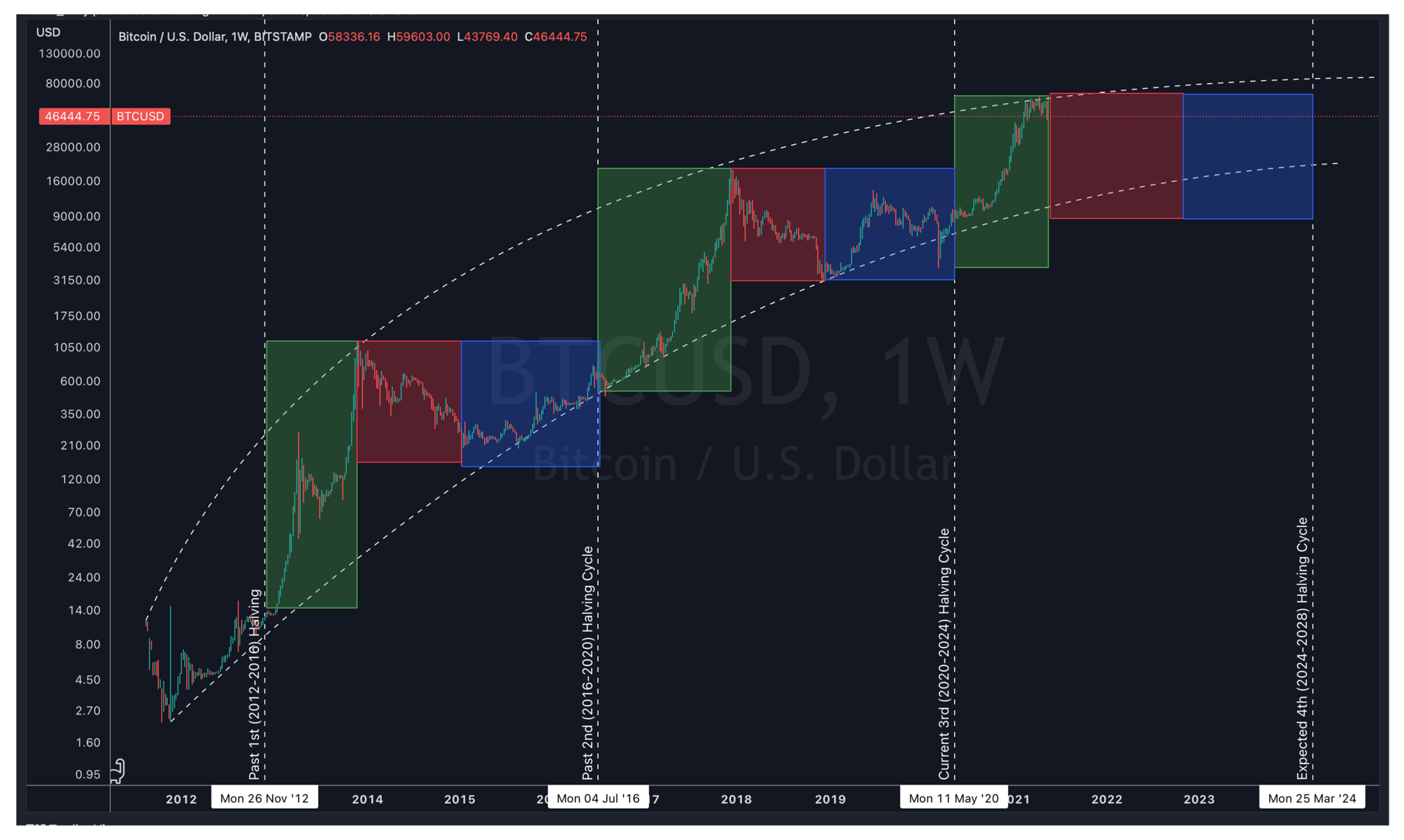Understanding The Bitcoin (BTC) Rally: Trade, The Fed, And Market Sentiment

Table of Contents
The Role of Trading Activity in the Bitcoin (BTC) Rally
Several key trading activities are significantly impacting the Bitcoin (BTC) rally. Increased institutional and retail investor interest, combined with on-chain analysis, paints a clearer picture of this dynamic market.
Increased Institutional Investment
Large institutional investors are increasingly embracing Bitcoin. This shift is a significant driver of the recent rally.
- Increased participation from large institutional investors like hedge funds and corporations: Companies like MicroStrategy and Tesla have made substantial Bitcoin purchases, signaling a growing acceptance of Bitcoin as a legitimate asset class. This adds significant buying pressure to the market.
- Grayscale Bitcoin Trust (GBTC) inflows as a key indicator: GBTC inflows often precede price increases, demonstrating institutional accumulation. Monitoring these inflows provides valuable insight into future price movements.
- Impact of regulatory clarity (or lack thereof) on institutional adoption: While regulatory uncertainty remains a concern, increasing clarity in some jurisdictions is encouraging further institutional investment. Clearer regulatory frameworks can boost confidence and attract more institutional capital.
- Growing acceptance of Bitcoin as a legitimate asset class: The narrative is shifting. Bitcoin is no longer solely viewed as a speculative asset; many institutions now see it as a potential store of value and diversification tool within their portfolios.
Retail Investor Demand
Retail investor interest plays a significant role, amplifying the momentum of the Bitcoin rally.
- Rising interest from individual investors, fueled by social media trends and news coverage: Positive news and social media hype can trigger buying frenzies amongst retail investors. This influx of capital further propels the price upward.
- Influence of cryptocurrency exchanges and trading platforms: User-friendly exchanges and platforms make it easier than ever for individuals to buy and sell Bitcoin, contributing to increased participation.
- Impact of Bitcoin price volatility on retail investor behavior: Volatility attracts both risk-seeking and risk-averse investors. While volatility can lead to both price increases and decreases, the overall trend often draws in retail traders seeking quick profits or hedging against inflation.
- Increased accessibility and ease of purchase through user-friendly platforms: The ease of purchasing Bitcoin through intuitive interfaces is lowering the barrier to entry for many retail investors.
On-chain Metrics & Whale Activity
Analyzing on-chain data provides valuable insights into Bitcoin’s price dynamics.
- Analysis of Bitcoin transaction volume and network activity: High transaction volumes often correlate with increased price activity, suggesting heightened demand.
- Tracking large Bitcoin holders (whales) and their trading patterns: The actions of large holders can significantly impact price movements. Monitoring their activity provides valuable clues about potential future trends.
- Correlation between on-chain data and price movements: Analyzing on-chain metrics alongside price charts helps identify trends and predict potential future price movements.
- Understanding supply and demand dynamics through on-chain analysis: On-chain data offers a transparent view of Bitcoin's supply and demand, allowing for a more informed assessment of market conditions.
The Influence of the Federal Reserve (Fed) on Bitcoin's Price
The Federal Reserve's monetary policies significantly impact Bitcoin's price. Its actions influence inflation, investor sentiment, and the overall economic landscape, all of which affect Bitcoin’s appeal.
Monetary Policy and Inflation
The Fed's actions directly influence inflation, and Bitcoin's value is often seen as a hedge against inflation.
- The impact of inflationary pressures on Bitcoin's appeal as a hedge against inflation: When inflation rises, investors may turn to Bitcoin as a store of value to protect their purchasing power.
- Analysis of the Fed's interest rate decisions and their effect on Bitcoin: Interest rate hikes often lead to decreased risk appetite and can cause Bitcoin's price to temporarily decline. Conversely, lower interest rates can stimulate investment in riskier assets like Bitcoin.
- Comparison of Bitcoin's performance against traditional assets during periods of monetary easing or tightening: Bitcoin's performance relative to traditional assets can vary depending on the Fed's policies. During periods of quantitative easing, Bitcoin might show stronger growth.
- Bitcoin as a potential safe haven asset in uncertain economic times: Some investors view Bitcoin as a safe haven during times of economic uncertainty, leading to increased demand.
Quantitative Easing (QE) and its Implications
Quantitative easing (QE) significantly impacts the money supply and can influence Bitcoin's value.
- Explanation of QE and its potential to inflate traditional assets: QE increases the money supply, potentially leading to inflation in traditional assets.
- The argument for Bitcoin as an alternative investment in a QE environment: Some investors see Bitcoin as a hedge against QE-induced inflation, leading them to allocate funds to it.
- The role of Bitcoin in a diversified portfolio during periods of QE: Bitcoin can act as a diversifier within a portfolio, potentially mitigating the risks associated with QE.
- The potential for Bitcoin to benefit from increased money supply: The increased money supply during QE could lead to increased demand for alternative assets like Bitcoin.
Market Sentiment and Bitcoin (BTC) Price Action
Market sentiment plays a crucial role in shaping Bitcoin's price. Media coverage, fear, uncertainty, and doubt (FUD), as well as overall market conditions, all contribute to price fluctuations.
Media Coverage and Public Perception
News coverage and public opinion strongly influence Bitcoin's price.
- Impact of positive and negative news coverage on investor confidence: Positive news tends to boost investor confidence, driving up prices, while negative news can trigger sell-offs.
- Analysis of social media sentiment towards Bitcoin: Social media sentiment can be a powerful indicator of market sentiment. Positive sentiment generally leads to higher prices, while negative sentiment can lead to price drops.
- The role of influencers and prominent figures in shaping public opinion: Statements from influential figures can significantly impact public perception and drive market trends.
- The power of narrative and media influence on Bitcoin's price: The narrative surrounding Bitcoin greatly influences its price. Positive narratives can fuel rallies, while negative ones can lead to sell-offs.
Fear, Uncertainty, and Doubt (FUD)
Negative news and uncertainty significantly impact Bitcoin's price.
- Understanding how negative news and regulatory uncertainty impact the Bitcoin price: Negative news and regulatory uncertainty often lead to sell-offs as investors become risk-averse.
- The influence of market manipulation and rumors on investor sentiment: Market manipulation and rumors can spread FUD, leading to significant price swings.
- How to identify and mitigate the impact of FUD on investment decisions: It's crucial to discern between legitimate concerns and misinformation when making investment decisions.
- Strategies for managing risk and navigating periods of uncertainty: Diversification and a long-term investment strategy can help mitigate the risks associated with FUD.
Overall Market Conditions
Bitcoin’s price is influenced by broader market conditions.
- Correlation between Bitcoin's performance and the broader stock market: Bitcoin's price often correlates with the performance of the broader stock market, reflecting overall investor risk appetite.
- Influence of global economic events on investor risk appetite: Global economic events can impact investor risk appetite, influencing Bitcoin's price.
- The relationship between Bitcoin and other cryptocurrencies (altcoins): Bitcoin’s price can impact the performance of other cryptocurrencies (altcoins).
- Considering the broader macroeconomic context when analyzing Bitcoin's price: A comprehensive understanding of the macroeconomic landscape is essential for accurate Bitcoin price analysis.
Conclusion
The Bitcoin (BTC) rally is a complex phenomenon driven by a confluence of factors. Understanding the interplay between trading activity, Federal Reserve policies, and overall market sentiment is essential for informed investment decisions. While institutional adoption, positive market sentiment, and potential inflation hedges contribute to upward trends, it's crucial to remember the inherent volatility of the cryptocurrency market and the potential impact of negative news or regulatory changes. Continue learning about the factors influencing the Bitcoin (BTC) rally and make informed investment decisions based on your own risk tolerance. Stay informed about Bitcoin (BTC) price movements and market dynamics to capitalize on future opportunities.

Featured Posts
-
 Hollywood Shut Down Double Strike Impacts Film And Television
Apr 24, 2025
Hollywood Shut Down Double Strike Impacts Film And Television
Apr 24, 2025 -
 Canadian Conservatives Vow To Lower Taxes Shrink Budget Deficits
Apr 24, 2025
Canadian Conservatives Vow To Lower Taxes Shrink Budget Deficits
Apr 24, 2025 -
 California Gas Prices Soar Newsoms Plea For Oil Industry Cooperation
Apr 24, 2025
California Gas Prices Soar Newsoms Plea For Oil Industry Cooperation
Apr 24, 2025 -
 Dow Rallies 1000 Points Stock Market Update And Analysis
Apr 24, 2025
Dow Rallies 1000 Points Stock Market Update And Analysis
Apr 24, 2025 -
 Israeli Beach Draws Crowds Then Tragedy Strikes A Swimmers Disappearance And Discovery
Apr 24, 2025
Israeli Beach Draws Crowds Then Tragedy Strikes A Swimmers Disappearance And Discovery
Apr 24, 2025
